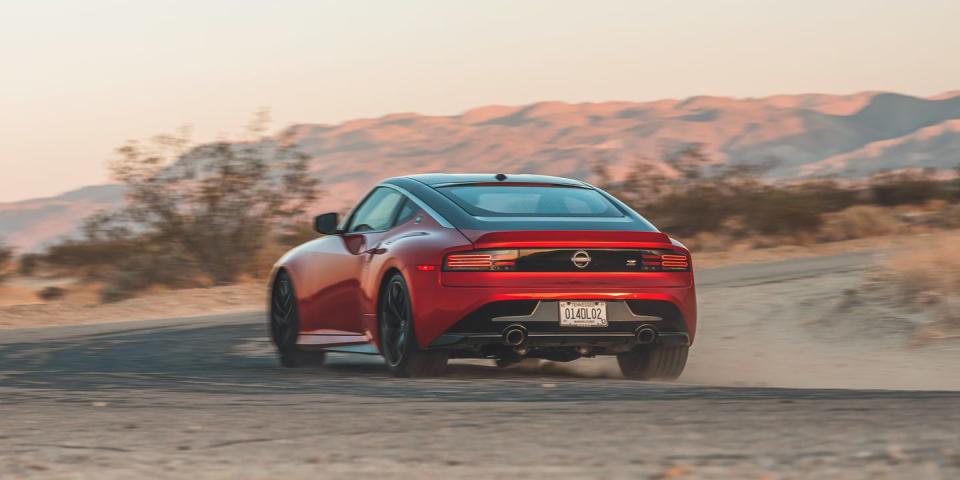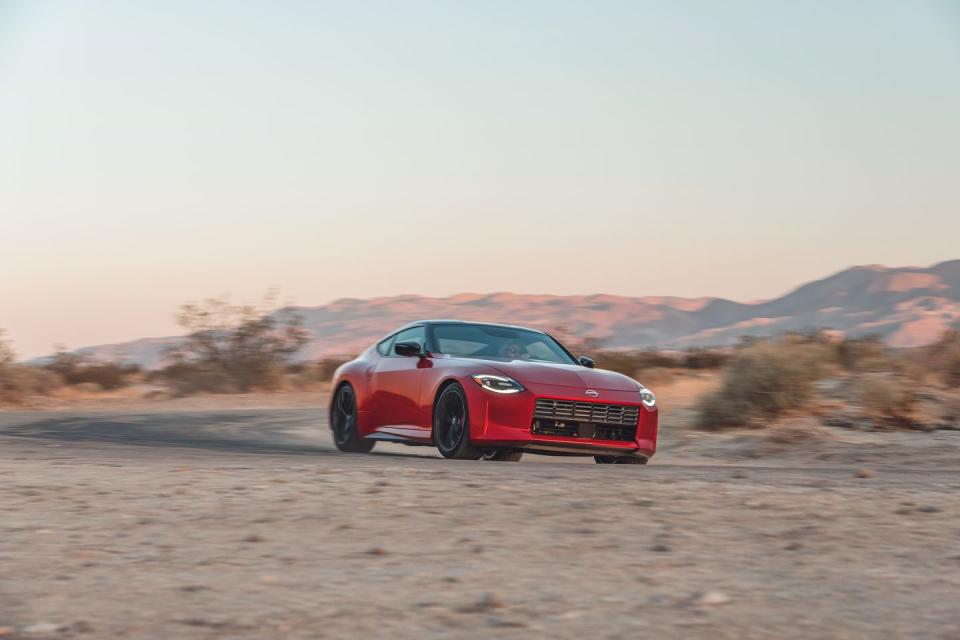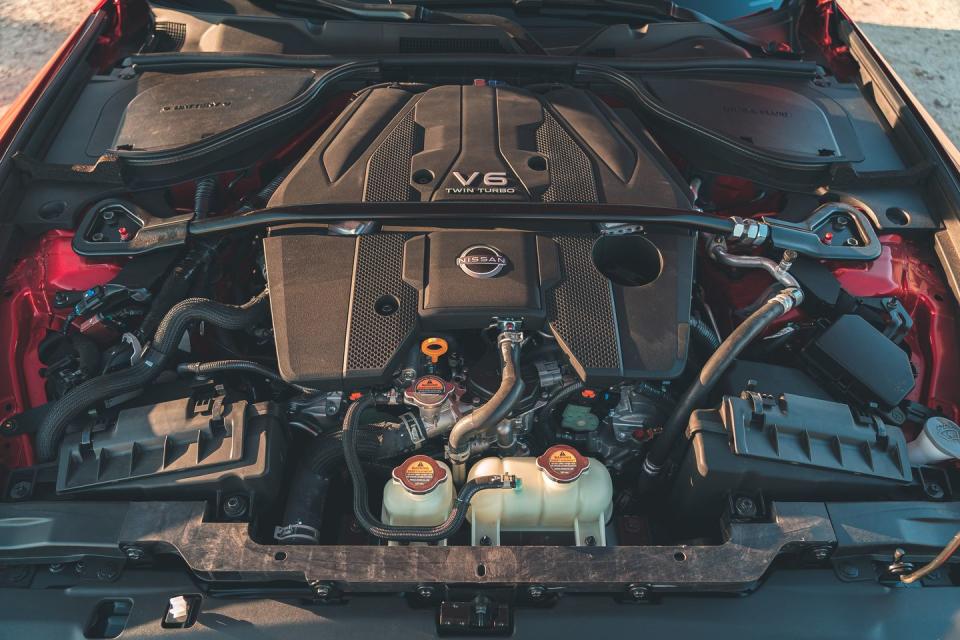Tested (Twice): 2023 Nissan Z Performance Doesn't Reach Far Enough

UPDATE 6/17/22: This review has been updated with test results.
Can we get a round of applause for plate tectonics? This inexorable geologic process is, after all, ultimately responsible for the myriad fantastic driving roads draped over the valleys and along the mountain ridges and that surround the vast Los Angeles basin. It's the optimal place to wring out a new sports car such as the 2023 Nissan Z, and it's handy that our West Coast testing grounds sit on the far side of the range. If you're on the West Coast test crew, a trip to the track represents the ultimate commute to work.
Our initial brief encounter with the Z at the launch event showed promise, with the well-executed heritage styling and blistering 400-hp twin-turbo 3.0-liter V-6 borrowed from the Infiniti Q50/60 Red Sport capturing our full attention. But those driving roads were more scenic than challenging, and the track exercise was all too brief and structured. That's why we're here, in a turnout high above L.A., catching a whiff of warm brakes as we stretch our legs and scribble notes after a hard session.

A couple in a 370Z pulls into the overlook while we're standing there. They catch sight of the Z and wheel to a spot nearby. The guy can barely contain his enthusiasm. "Oh, man. Is that the new 400Z?" "Yeah," we reply, not bothering to explain that it's just Z this time, because it's a turbo 3.0-liter V-6 engine, not a 4.0-liter naturally aspirated one, and that rehashing 300ZX a third time wasn't in the cards. "How is it? It's gotta be better than my car, right?" he suggests, as he looks the Z over approvingly. "Yeah," we say. "It's quite a bit nicer than the 370Z, particularly the engine."
That much is certainly true. The new Z clearly outshines the 370Z. But that car was originally introduced—checks calendar—some 14 years ago. The new Z ought to be better than a 370Z. We wanted to see if Nissan had gone far enough, to see if the 2023 Nissan Z Performance lived up to expectations of a modern $50,000 sports car when asked to do sports-car things on roads of our own choosing. On that note, fault lines were already starting to appear.
A lot of that has to do with the fact that the Z is an evolution of the 370Z, not a full redesign. The two share a wheelbase, overall width, and roof height, not to mention much of the chassis itself—save for a few extra pieces welded on to increase torsional stiffness by a rather tepid 11 percent. The strut front and multilink rear suspensions haven't changed much, with a revised upper control arm for extra caster and monotube dampers instead of twin-tube units amounting to incremental bolt-on upgrades. The new engine and its layered strata of coolers (engine, AC, oil, transmission, intercooler) contribute an additional 180 pounds compared to the last 370Z we tested (3507 vs. 3327 pounds), with the front axle's burden rising by one percentage point (56 versus 55).

Up to about six-tenths, the Z Performance seems coordinated and willing. The new electric power steering is linear and predictable enough, and the chassis feels relatively coordinated as it arcs through bends. The shifter action is far less heavy and unwieldy than the 370Z's because of reprofiled detents, and it snicks into place smoothly when operated with a loose grip and an open hand. The brakes feel sure underfoot, and they're easy to modulate. The pedals are nicely placed for heel-toe footwork, too, but the SynchroRev Match feature works brilliantly if you haven't mastered the steps.
Ratchet up the pace and intensity, however, and the Z does not respond in kind as a sports car should. Pushed hard, the damping starts to feel insufficient, and the suspension bounds vertically overmuch, especially if the corners are uneven—as they often are in a fault zone. Understeer starts to creep in as the Z's nose weight comes to the fore, and the Bridgestone S007 B-Silent summer tires soon reveal they don't generate modern levels of sports-car stick, as evidenced by their 0.93-g showing on our skidpad. The brakes keep up their end of the bargain in terms of fade resistance and feel, but the tires limit the Z's 70-mph stopping performance to 166 feet and an unimpressive 331 feet for the stop from 100 mph. Both are better showings than the aforementioned 370Z (0.89 g and 180 feet), but they are far from class leading.

 Yahoo Autos
Yahoo Autos 